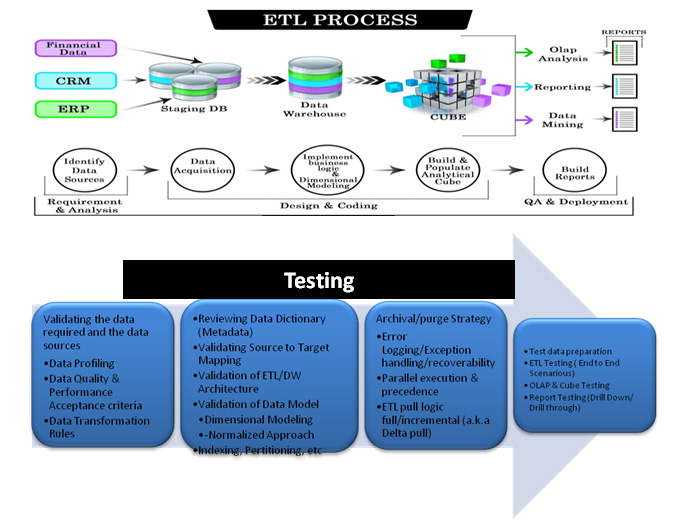



ETL stands for Extract Transform and Load. Typical ETL systems and the Verification and validations that happen across the ETL Process is demonstrated below.

Two main types of test on the data warehouse conceptual schema in the scope of functional testing. The first, we call fact test, verifies that the workload preliminary expressed by users during requirement analysis is actually supported by the conceptual schema. The second type of test a conformity test, because it is aimed at assessing how well conformed hierarchies have been designed.
Testing the logical schema before it is implemented and before ETL design can dramatically reduce the impact of errors due to bad logical design. An effective approach to functional testing consists in verifying that a sample of queries in the preliminary workload can correctly be formulated in SQL on the logical schema. We call this the star test.
A functional test of ETL is aimed at checking that ETL procedures correctly extract, clean, transform, and load data into the data mart. The best approach here is to set up unit tests and integration tests. Unit tests are white-box test that each developer carries out on the units developed. Integration test allows the correctness of data flows in ETL procedures to be checked.
Database testing is mainly aimed at checking the database performances using either standard (performance test) or heavy (stress test) workloads.
Functional testing of the analysis front-ends must necessarily involve a very large number of end-users, who generally are so familiar with application domains that they can detect even the slightest abnormality in data. Nevertheless, wrong results in OLAP analyses may be difficult to recognize. They can be caused not only by faulty ETL procedures, but even by incorrect data aggregations or selections in front-end tools.
© 2024 Novature Tech Pvt Ltd. All Rights Reserved.